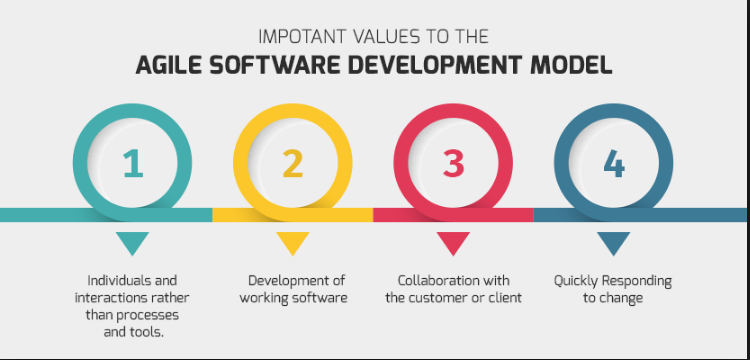Agile software development refers to a group of software development methodologies based on iterative development, where requirements and solutions evolve through collaboration between self-organizing cross-functional teams.
When is using Agile beneficial?
- Undefined scope at the beginning of the project.
- Extreme changes during the project.
When is using Agile Possible?
The product has the capacity to be developed
- Incrementally
- Iteratively
IT Development Process
The following are the most common IT Development Process
- Information Gathering
- Design
- Build
- Integrate
- Test
- Implement
Running the IT Development Process:
- Predictive / Traditional / Waterfall
- Agile
Development Models:
In the Predictive / Traditional / Waterfall Development Model we will get the working software at the end of the process.
While in Agile Development Model we will get the working software at the end of each Iteration.
Incremental and Iterative approach in Agile Development Model
Agile Manifesto
- Individuals and interactions over processes and tools
- Working software over comprehensive documentation
- Customer collaboration over contract negotiation
- Responding to change over following a plan
Agile Principles
Principle 1 :
Principle 2 :
Welcome changing requirements, even late in development. Agile processes harness change for the customer's competitive advantage.
Principle 3 :
Deliver working software frequently, from a couple of weeks to a couple of months, with a preference for the shorter timescale.
Principle 4 :
Business people and developers must work together daily throughout the project.
Principle 5 :
Build projects around motivated individuals. Give them the environment and support they need, and trust them to get the job done.
Principle 6 :
The most efficient and effective method of conveying information to and within a development team is face-to-face conversation.
Principle 7 :
Working software is the primary measure of progress.
Principle 8 :
Agile processes promote sustainable development. The sponsors, developers, and users should be able to maintain a constant pace
Principle 9 :
Continuous attention to technical excellence and good design enhances agility.
Principle 10 :
Simplicity -- the art of maximizing the amount of work not done -- is essential.
Principle 11 :
The best architectures, requirements, and designs emerge from self-organizing teams.
Principle 12 :
At regular intervals, the team reflects on how to become more effective, then tunes and adjusts its behavior accordingly.
IT Development Process
The following are the most common IT Development Process
- Information Gathering
- Design
- Build
- Integrate
- Test
- Implement
Running the IT Development Process:
- Predictive / Traditional / Waterfall
- Agile
Development Models:
In the Predictive / Traditional / Waterfall Development Model we will get the working software at the end of the process.
While in Agile Development Model we will get the working software at the end of each Iteration.
Agile Manifesto
- Individuals and interactions over processes and tools
- Working software over comprehensive documentation
- Customer collaboration over contract negotiation
- Responding to change over following a plan
Agile Principles
Principle 1 :
Our highest priority is to satisfy the customer through the early and continuous delivery of valuable software.
Principle 2 :
Welcome changing requirements, even late in development. Agile processes harness change for the customer's competitive advantage.
Principle 3 :
Deliver working software frequently, from a couple of weeks to a couple of months, with a preference for the shorter timescale.
Principle 4 :
Business people and developers must work together daily throughout the project.
Principle 5 :
Build projects around motivated individuals. Give them the environment and support they need, and trust them to get the job done.
Principle 6 :
The most efficient and effective method of conveying information to and within a development team is face-to-face conversation.
Principle 7 :
Working software is the primary measure of progress.
Principle 8 :
Agile processes promote sustainable development. The sponsors, developers, and users should be able to maintain a constant pace
indefinitely.
Principle 9 :
Continuous attention to technical excellence and good design enhances agility.
Principle 10 :
Simplicity -- the art of maximizing the amount of work not done -- is essential.
Principle 11 :
The best architectures, requirements, and designs emerge from self-organizing teams.
Principle 12 :
At regular intervals, the team reflects on how to become more effective, then tunes and adjusts its behavior accordingly.






Comments
Post a Comment